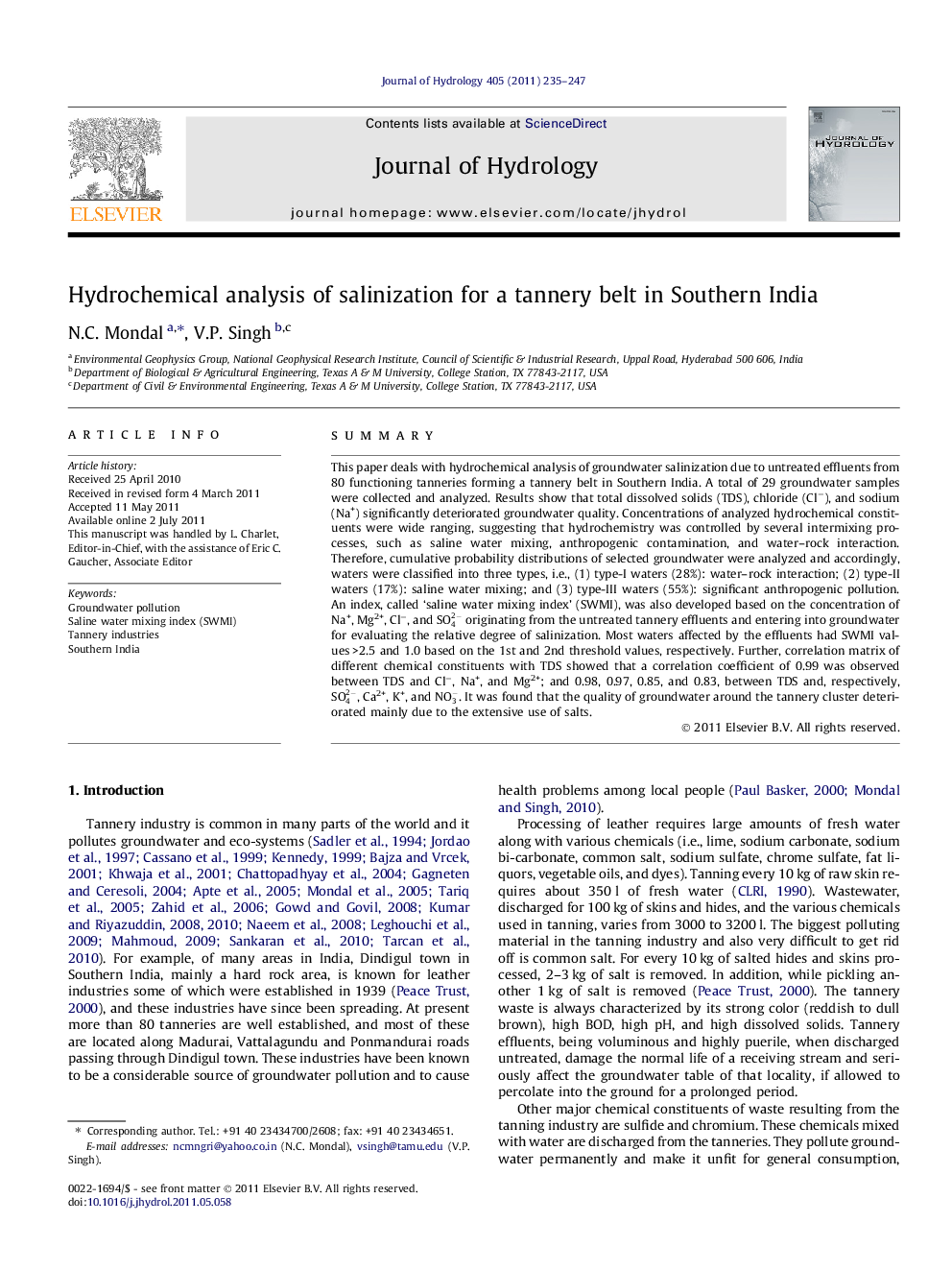| کد مقاله | کد نشریه | سال انتشار | مقاله انگلیسی | نسخه تمام متن |
|---|---|---|---|---|
| 4577395 | 1630017 | 2011 | 13 صفحه PDF | دانلود رایگان |

SummaryThis paper deals with hydrochemical analysis of groundwater salinization due to untreated effluents from 80 functioning tanneries forming a tannery belt in Southern India. A total of 29 groundwater samples were collected and analyzed. Results show that total dissolved solids (TDS), chloride (Cl−), and sodium (Na+) significantly deteriorated groundwater quality. Concentrations of analyzed hydrochemical constituents were wide ranging, suggesting that hydrochemistry was controlled by several intermixing processes, such as saline water mixing, anthropogenic contamination, and water–rock interaction. Therefore, cumulative probability distributions of selected groundwater were analyzed and accordingly, waters were classified into three types, i.e., (1) type-I waters (28%): water–rock interaction; (2) type-II waters (17%): saline water mixing; and (3) type-III waters (55%): significant anthropogenic pollution. An index, called ‘saline water mixing index’ (SWMI), was also developed based on the concentration of Na+, Mg2+, Cl−, and SO42- originating from the untreated tannery effluents and entering into groundwater for evaluating the relative degree of salinization. Most waters affected by the effluents had SWMI values >2.5 and 1.0 based on the 1st and 2nd threshold values, respectively. Further, correlation matrix of different chemical constituents with TDS showed that a correlation coefficient of 0.99 was observed between TDS and Cl−, Na+, and Mg2+; and 0.98, 0.97, 0.85, and 0.83, between TDS and, respectively, SO42-, Ca2+, K+, and NO3-. It was found that the quality of groundwater around the tannery cluster deteriorated mainly due to the extensive use of salts.
► Hydrochemical constituents of groundwater for a tannery belt were wide ranged.
► Their cumulative probability distributions shown two threshold values with three segments.
► It suggests that groundwater was controlled by the several intermixing processes.
► 1st represents for background level, other for anthropogenic and saline water mixing.
► It was confirmed by a proposed parameter called saline water mixing index (SWMI).
Journal: Journal of Hydrology - Volume 405, Issues 3–4, 5 August 2011, Pages 235–247